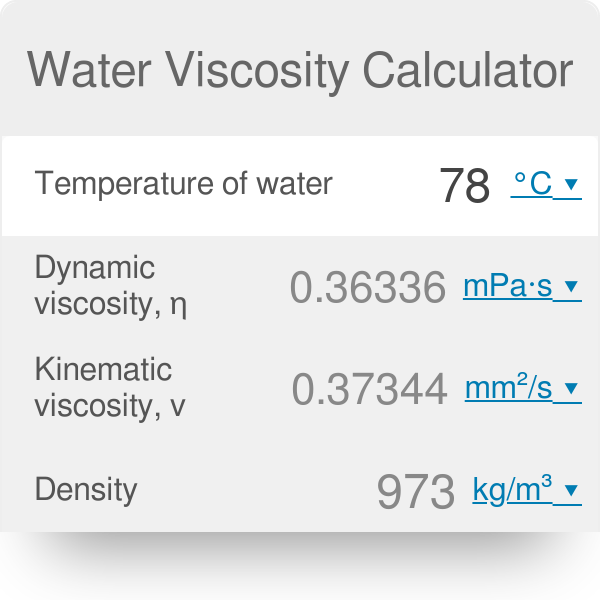
Now we have A and B for this oil, we can find the viscosity at any other temperature: Now subtract one from the other which eliminates A, and solve for B: Note that 40degC has been converted to 313degreeK in (ii) This can be done if we know the viscosity of the hydrocarbon at two different temperatures. So to use the ASTM D341 expression to find the viscosity at any temperature we need to solve the equation to find the relevant values of A and B. They are calculated in the hidden sheets and using the ASTM D341 equation, not some other program and not derived from some specific oil but from the oil in question.(anyone wants to delve deeper, email via the web site and I will reply with the password which is simply to protect against inadvertent changes). This is the value of Z used in the spreadsheet.Ī and B are constants unique to the fuel. Z can be quite complex, worst case: Z = where C to H are all exponential functions of v) but for v>2cst, ASTM D341 allows that Z =(v+0.7) where v is the kinematic viscosity. Where A and B are constants and T is the temperature in degrees kelvin, Log = logarithm to base 10.īecause most people have the viscosity data with temperatures in degrees C, the data is entered in degrees C format and converted to Kelvin in the calculations. The spreadsheet only uses the ASTM D341 equation of temperature Vs Viscosity: Also he mentioned he used celsius temperature and the equation does require Kelvin ( checked and that makes a big difference). I don't see any calculation for the values A and B in there (it looks like they were solved in some other program for specific oils and dumped into this spreadsheet).

The answers, from my own use of it, appear indistinguishable from some proprietary calculations such as a Castrol equation (blend 42?) used for lube oils but not others some special calculations, such as the Shell V50 equation, are only applicable under specific circumstances. The calculations apply to viscosity values above 2cst and is applicable as defined by the standard that is, it means it is not just for fuel oils (as the data populating the spreadsheet might imply) but for any hydrocarbons within the scope of the ASTM D341 limitations and applicability.

I was searching for something else and found the above referenced thread in which the spreadsheet RMI ASTMN D341.xls was referred to and there were a couple of queries raised that, had I been aware at the time, I would have responded to so I apologise for not doing so at the time and take this opportunity to redress the situation.

Re: thread342-181824: viscosity conversion for temperature (closed)


 0 kommentar(er)
0 kommentar(er)
